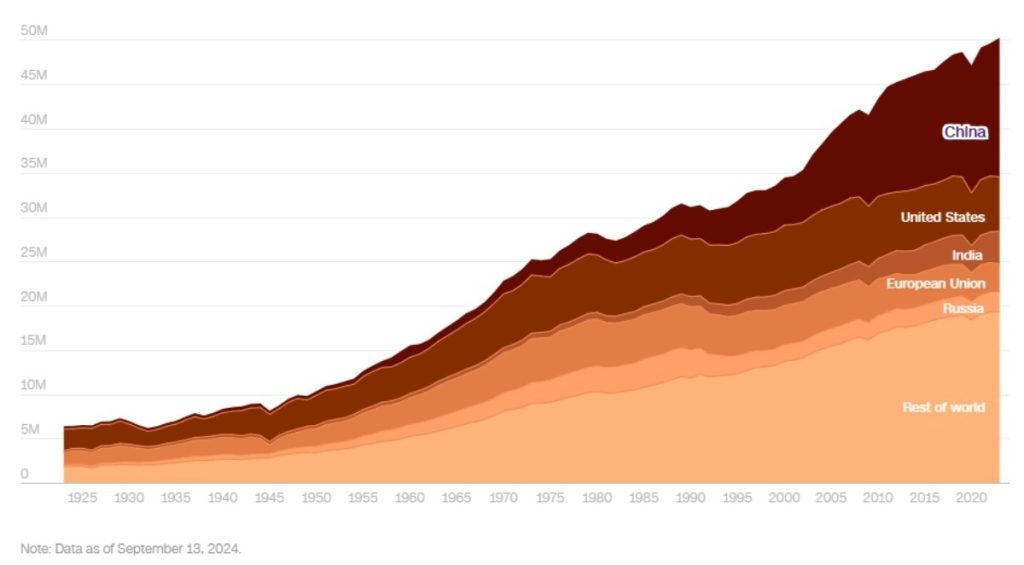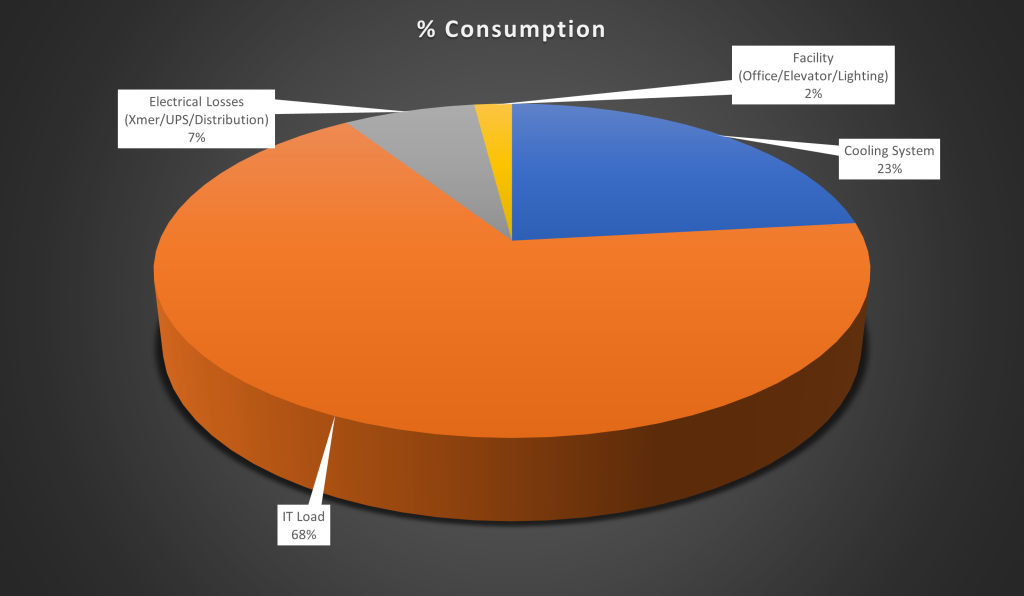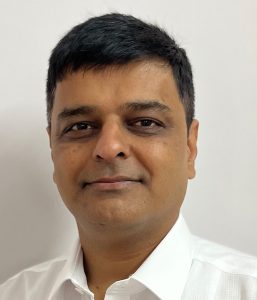In past 4 decades global average temperature has gone up by 1ºC and unless greenhouse gas (GHG) emissions are curtailed, the temperature rise can go up by another 1.5 ºC in next 10 years causing catastrophic environmental impact. Note that the COP has a target to limit global temperature rise to less than 2 ºC to have a sustainable future.
Sadly, GHG emissions have been increasing and stands at 50B Tonnes of CO2 equivalent globally, creating a big question on Earth’s sustainability. Some experts opine that a 4 ºC temperature rise will take us to point of no return.

Source: CNN Graphic
India is the 3rd largest emitter of greenhouse gases, accounting for over 4 billion tonnes of CO2 equivalent GHG emission accounting for 7% of emission. Through COP 26, it has committed to be net zero by 2070, have 500 GW of non-fossil fuel generation by 2030 with 50% of energy requirement coming from renewable sources by 2030, the reality is it’s far off from these targets. As of today, Coal-fired power generation contributes over 68% of electricity and is the single biggest contributor of GHG emission.
Context for datacenters
India accounts for 20% of the worldwide data production but has only 3% of its datacenter capacity. Driven by digital economy, AI and Crypto datacenter demand is growing. Between 2024 and 2026 datacenter capacity in India will double up from 1 GW to 2 GW and by 2030 it’s expected to reach 17 GW consuming about 8% of energy. It’s imperative that as a major consumer of energy, we need to bring in efficiency in datacenters there by reducing carbon intensity, use green fuel and most importantly 100% of our energy through renewable energy resources.
Realising the need to have a sustainable approach, CtrlS as a frontrunner in the Indian datacenter industry, has taken up a multi-pronged approach that includes working towards a 100% renewable energy goal, achieving industry-lowest PUE, using advanced cooling systems, improving energy efficiency, implementing water conservation measures, on its path to Net Zero by 2040, 30 years ahead of India’s commitment to be net zero.

A breakdown of energy consumption by different components of CtrlS’ datacenters.
Why Are Datacenters Big Carbon Emitters?
Datacenters require continuous power to run servers, cooling systems, and backup equipment. This energy is often sourced from non-renewable sources such as coal and natural gas, making these facilities significant contributors to carbon emissions. According to a report by the International Energy Agency (IEA), global datacenters consumed around 460 terawatt hours (TWh) of electricity in 2022, and they will likely consume 1000 TWh by 2026. If not addressed, this growth could significantly impact global carbon reduction targets.
Evolving Strategies for Greener Datacenters in India
Harnessing Power for Clean Energy
Renewable energy technologies are evolving with higher efficiency and lower cost. The primary sources of renewable energy in India today are Solar, Wind and Hydro power. Recently, advancement in battery storage technology have made them affordable and Green Hydrogen could be the next thing.
CtrlS will invest in 1000 MW by 2030 variable renewable energy resources that further can be augmented with battery storage or other energy storage techniques to provide nearly 100% renewable energy to its datacenters. We have already invested in 100 MW solar project in Maharashtra and entered into long-term power purchase agreement in Karnataka and Noida to supply renewable energy to our datacenters.
Focusing on Green Buildings
Green building council provides certification based on sustainability parameters such as reduction in energy and water consumption, improved air quality and safety standards. CtrlS has a strong in-house design team that works on latest technologies such as liquid cooling, well ventilated design and water conservation techniques. As a result, our Mumbai datacenter is the world’s first LEED platinum certified datacenter and all our datacenters are platinum or gold certified today.
Optimising Energy Efficiency with Advanced Technologies
Datacenters need to use advanced technologies to optimise cooling systems by analysing patterns in energy usage and adjusting temperatures accordingly. Identifying opportunities to reduce energy consumption during periods of lower data activity, can further minimise waste. CtrlS believes in sustainable development and hence we have always focused on energy conservation and improving efficiency. We have made an annual saving of 18.5 GWh through energy conservation and eliminated nearly 2,25,000 metric tons of CO2.
Water Recycling for Cooling Systems
According to Energy Efficiency Guidelines by Bureau of Energy Efficiency (BEE), Cooling systems in datacenters are responsible for around 40% of the total energy consumption. To address both energy and water waste, datacenters are adopting water recycling processes. This involves using advanced techniques to recycle wastewater, minimising the need for freshwater and reducing the environmental burden.
CtrlS has already recycled nearly 10 million litres of water and is committed to reducing its water usage further by implementing advanced water recycling technologies. This initiative will not only reduce water consumption but will also help maintain operational efficiency by reusing water for critical cooling processes.
Conclusion
As India continues to expand its datacenter infrastructure, it must prioritise sustainability to meet both national and global climate targets.
Datacenters are the necessity of an increasingly digital India and hence by integrating sustainable measures to reduce carbon emissions, datacenters can be pivotal in nation building, both economically and environmentally. We believe, with the right mix of policies, technologies, and innovation, India can build a sustainable digital future without compromising its environmental commitments.

Dillip Guru, Senior Vice President, ESG and Renewable Energy, CtrlS Datacenters
The author is Senior Vice President, ESG and Renewable Energy, CtrlS Datacenters. He brings over 30 years of industry experience with a focus on renewable energy, decarbonization, project finance and global strategy. At CtrlS, he is driving renewable energy and sustainability initiatives in the company's pursuit to create better tomorrow.


